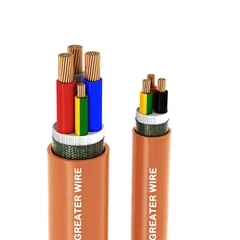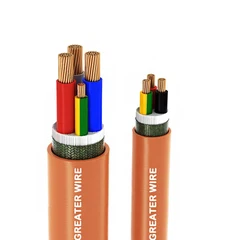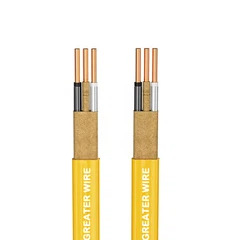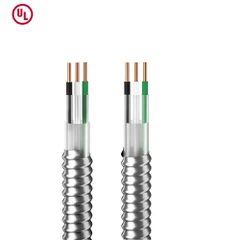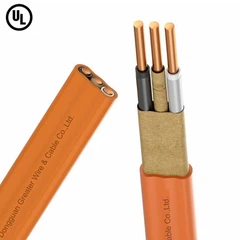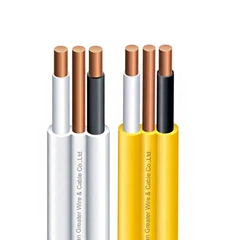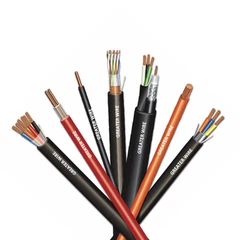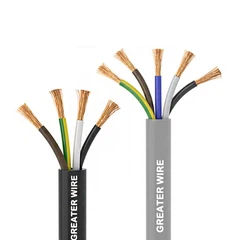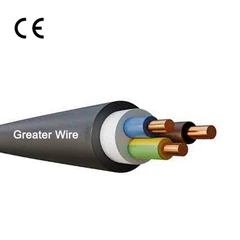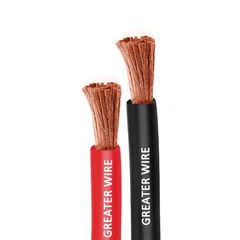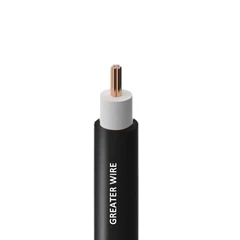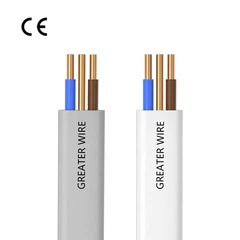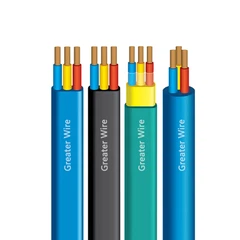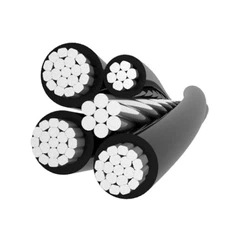In the design and installation of a solar power system, solar cables and solar wires play a crucial role in transmitting electricity from solar panels to the inverter, battery storage, and ultimately to the household or the grid. One of the key components of any solar power system is selecting the right solar cable that can safely handle the expected electrical load, without causing excessive voltage drop or overheating.
A common question that arises when designing a solar installation is: How much kilowatt (kW) can a 6mm solar cable handle? This is an important consideration because selecting the correct cable size ensures system safety, reliability, and efficiency. In this article, we will delve into the specifics of solar cables, how to determine the load capacity of a 6mm solar cable, and the factors that influence the kW capacity for solar wire.
Understanding Solar Cables and Solar Wires
Before we calculate how much kW a 6mm solar cable can handle, let's first understand what solar cables and solar wires are, and why they are critical to a solar system.
Solar Cable: A solar cable is a specialized electrical cable designed for use in photovoltaic (PV) systems. Solar cables are made with copper or aluminum conductors and are insulated with materials such as cross-linked polyethylene (XLPE) or ethylene tetrafluoroethylene (ETFE). These materials are designed to withstand harsh environmental conditions, including UV exposure, temperature extremes, and moisture, while delivering high electrical performance.
Solar Wire: Solar wire refers to the individual conductors inside the solar cable that carry electrical current. The wire is generally color-coded (red for positive and black for negative) to indicate polarity. The wire size, typically measured in square millimeters (mm²), determines the current-carrying capacity, and thus the amount of power (in kW) the wire can transmit.
In any solar installation, selecting the correct cable size is crucial to ensure the safe transmission of electrical current from the solar panels to the other components, such as inverters, batteries, or the grid.
What Does a 6mm Solar Cable Mean?
A 6mm solar cable refers to a cable that has a cross-sectional area of 6mm². This measurement indicates the thickness or diameter of the wire's conductor. The size of the wire determines how much current (measured in amps) it can carry without overheating, as well as the maximum power output (measured in kilowatts or kW) that can be safely transmitted.
However, the power capacity of a 6mm solar cable depends on several factors, including the material of the wire (copper or aluminum), the system voltage, the ambient temperature, and the insulation material. The basic principle is that larger cables can carry more amps and, consequently, more kilowatts of power.
Determining How Many kW a 6mm Solar Cable Can Handle
To determine how much power (in kW) a 6mm solar cable can handle, we need to consider the following factors:
Conductor Material: Copper vs. Aluminum
Voltage Rating of the System
Ambient Temperature
Length of the Cable
Voltage Drop Consideration
Let's explore these factors in detail.
1. Conductor Material: Copper vs. Aluminum
The material of the conductor is one of the primary factors affecting the current-carrying capacity of the solar wire.
Copper Solar Cable: Copper is the most commonly used conductor material due to its superior electrical conductivity. It can carry more current than aluminum of the same size, making copper the preferred choice for residential and commercial solar systems. For 6mm copper solar cable, the ampacity (current-carrying capacity) can range from 40 to 50 amps depending on the insulation and temperature conditions.
Aluminum Solar Cable: Aluminum is cheaper than copper but has a lower conductivity. As a result, aluminum cables require a larger cross-sectional area to carry the same current. For a 6mm aluminum solar cable, the ampacity is typically lower, around 30 to 40 amps.
Since copper offers better conductivity, we will assume copper solar cables in this example, which can safely handle 40 to 50 amps.
2. Voltage Rating of the System
The voltage of the solar system plays a critical role in determining how much power a 6mm solar cable can transmit. In a solar system, power (P) is the product of voltage (V) and current (I):
P=V×I
So, for the same current, a higher system voltage allows you to transmit more power.
12V System: In a 12V system, the current is typically higher for the same power. If the 6mm solar cable can handle 50 amps, the maximum power it can carry would be:
P=12V×50A=600W (0.6 kW)
24V System: In a 24V system, the current is lower. If the 6mm copper solar cable can still handle 50 amps, the maximum power it can carry would be:
P=24V×50A=1200W (1.2 kW)
48V System: For a 48V system, the current requirement decreases even further. If the 6mm copper cable can handle 50 amps, the power capacity is:
P=48V×50A=2400W (2.4 kW)
600V System: High-voltage systems (such as 600V) are commonly used for larger solar installations. If the 6mm copper solar cable can carry 50 amps, the maximum power it can carry is:
P=600V×50A=30,000W (30 kW)
Thus, the power (in kW) that a 6mm solar cable can transmit is dependent on the system voltage. The higher the voltage, the more power can be transmitted for the same current.
3. Ambient Temperature and Insulation Type
The ambient temperature and the insulation type of the cable affect its ampacity. In high-temperature environments, the current-carrying capacity of the cable is reduced. For example, a 6mm solar cable rated for 90°C in cooler environments can handle 50 amps, but in a 40°C environment, the ampacity may drop, requiring a larger cable size for the same load.
Additionally, the insulation type (such as XLPE or ETFE) plays a role in determining the maximum temperature the cable can withstand. Cables with higher-quality insulation materials can typically handle higher temperatures without risk of damage, thereby allowing them to carry more current.
4. Length of Cable and Voltage Drop Consideration
Voltage drop is a reduction in voltage that occurs as the electrical current flows through the wire, primarily due to the resistance of the wire. The longer the wire, the greater the voltage drop. To minimize this issue, it's important to keep the cable runs as short as possible, or use larger cables if the cable run is long.
The voltage drop should be kept to a minimum (usually under 3%) to ensure that the solar system operates efficiently. For longer cable runs, a larger solar cable (e.g., 10mm² or 16mm²) may be required to prevent excessive voltage drop.
Typical Power Handling Capacity of 6mm Solar Cable
Let's summarize the power handling capacity of a 6mm copper solar cable under different voltage systems:
12V system: A 6mm copper solar cable can safely carry about 0.6 kW (600W) of power.
24V system: For a 24V system, a 6mm copper solar cable can carry around 1.2 kW of power.
48V system: In a 48V system, a 6mm copper solar cable can carry approximately 2.4 kW of power.
600V system: For a 600V system, a 6mm copper solar cable can carry up to 30 kW of power.

